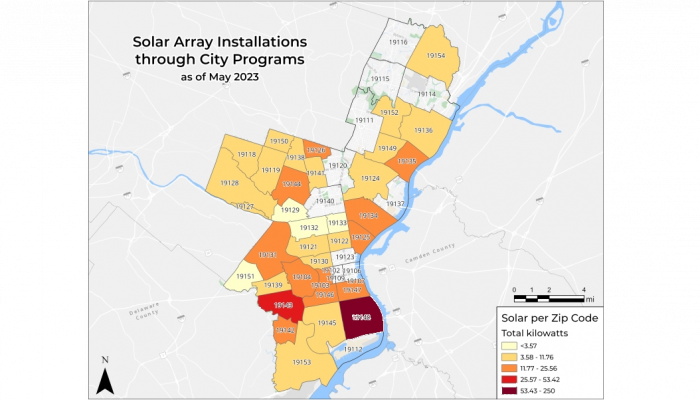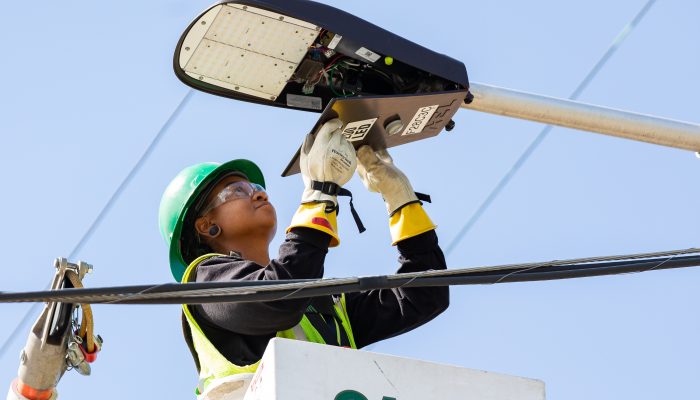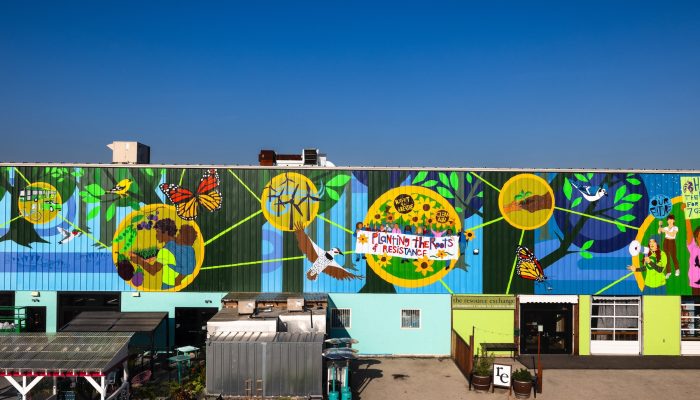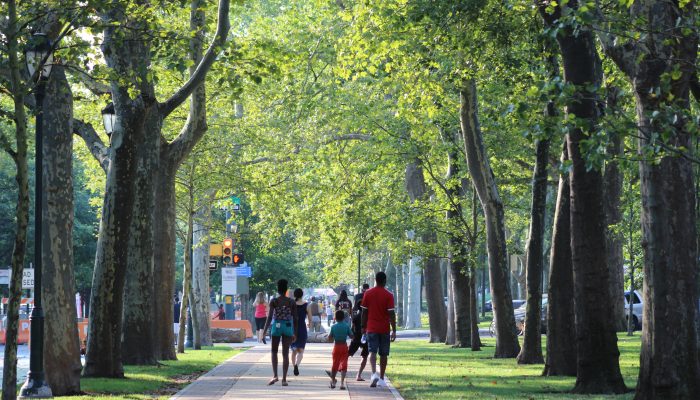In 2022, municipal properties used over 700,000 megawatt hours (MWh) of electricity! This includes municipal buildings, the Philadelphia Water Department, and Philadelphia airports. That amount of electricity use adds 333,798 tons of carbon dioxide into our atmosphere, which is equivalent to one gas-powered car driving over 770 million miles!
The Municipal Energy Office is working to decrease our greenhouse gas output. One of our goals outlined in the 2017 Municipal Energy Master Plan is to generate or buy 100% of all electricity from renewable resources by 2030. One strategy we’re using to meet this goal is to buy Renewable Energy Certificates (RECs). A REC serves as a way for organizations to “count” the amount of renewable energy that they consume. One MWh of electricity equals one REC.
The City purchases RECs generated by residential rooftop solar through the Philadelphia Energy Authority (PEA) programs Solarize Philly, Share the Sun, and Solar Savings Grants. Although the solar electricity may not flow directly to municipal buildings, the REC sales grow the City’s renewable energy portfolio, while also providing affordable solar panels for low- and moderate-income residents. Today, the City’s energy portfolio contains about 9% renewable electricity, in part due to local solar RECs. By the end of 2023, an additional 22% of our electricity will come from a solar farm in Adams County, Pennsylvania built by Energix Renewables. Increasing solar electricity reduces Philadelphia’s need for electricity produced by fossil fuels.
The PEA and its green bank affiliate, the Philadelphia Green Capital Corp (PGCC), manage the City’s solar programs for residents and businesses. Not only do these programs help Philadelphians afford renewable electricity, but they also help create local jobs and tax revenue from construction costs.
The Municipal Energy Office has put together the Philadelphia Solar REC Map and accompanying resources for residents to learn more about solar RECs, renewable electricity programs, and solar arrays in your neighborhood.




